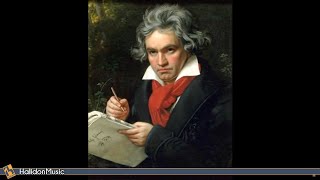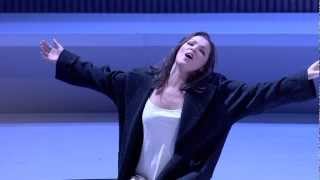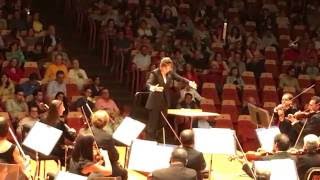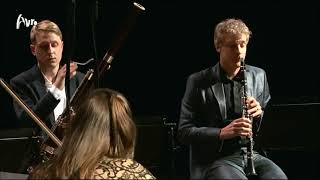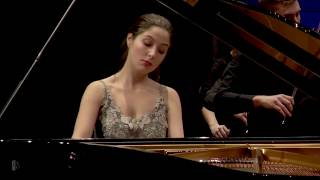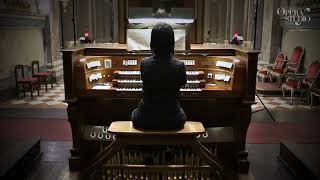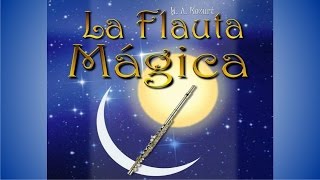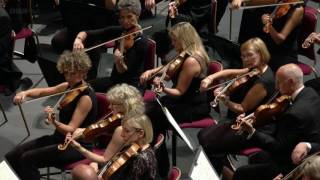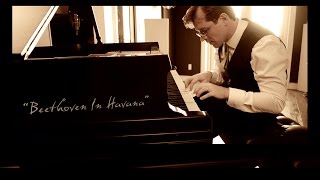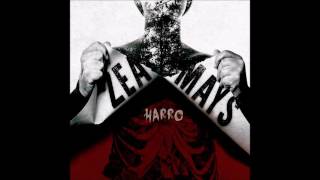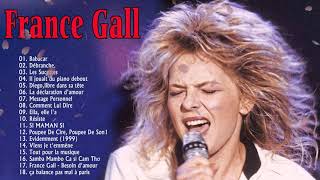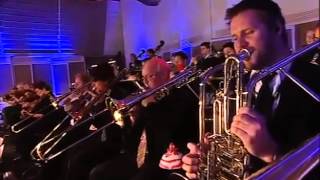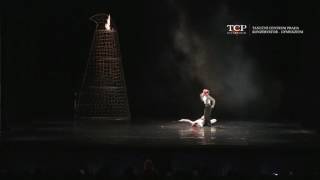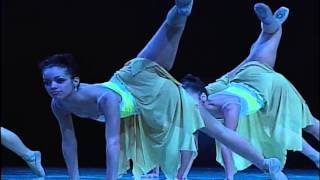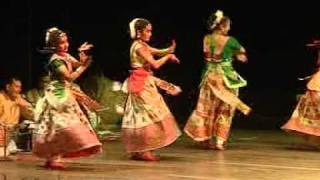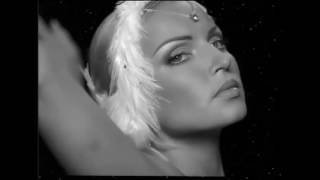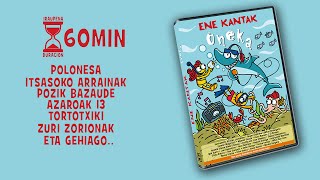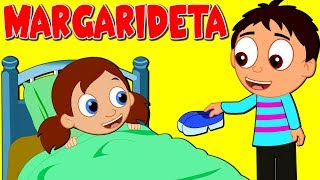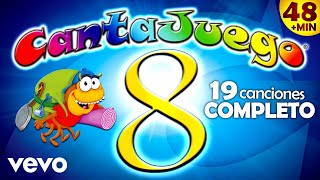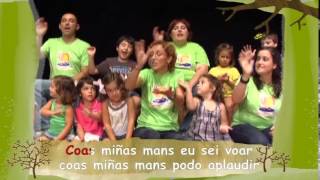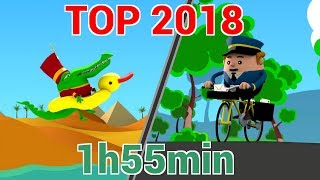Beethoven was born on December 16, 1770.
Recommended music videos for initiation to classical music
Ludwig van Beethoven (1770-1827) together with Bach and Mozart is part of the trio of giants of Western music. Born in Bonn , his father, of Flemish origin, tried to make a second Mozart of him, though it was a notable failure. Despite this, from the age of nine, the organist Christian Gottlob Neefe captivated him with the study of Bach , whom he would always keep in mind. In 1787 he moved to Vienna with the intention of receiving Mozart classes, but the death of his mother brought him back to Bonn after a few days. And so after five years, he returned to Vienna where he made contact with Haydn and Salieri , making himself known as a composer and pianist with well-known public recognition. However, his profession as a pianist could not be carried out due to the deafness that attacked him the following year until he was totally disabled from said faculty.
The video that we present today offers some of its most brilliant passages. 1 (00:00) Symphony No. 3, Eroica - I Allegro con brio .-. 2 (13:46) Symphony No. 5 - I Allegro con brio .-. 3 (21:02) Symphony No. 6, Pastoral - III. Allegro .-. 4 (26:04) Symphony No. 6, Pastoral - V. Allegretto .-. 5 (35:34) Symphony No. 7 - II Allegretto .-. 6 (38:56) Symphony No. 7 - III. Presto .-. 7 (42:24) Symphony No. 9 - Ode to Joy .-. 8 (1:07:38) Piano Sonata No. 14, Moonlight Sonata - I Adagio Sostenuto .-. 9 (1:11:47) Bagatelle No. 25 Für Elise .-. 10 (1:14:24) Rondo a Capriccio Rage Over a Lost Penny .-. 11 (1:21:53) Minuet in G major, WoO 10, No. 2 .-. 12 (1:24:24) Duet for Clarinet and Bassoon .-. 13. (1:28:17) Piano Concerto No. 5 Emperor Concerto - II. Adage .-. 14 (1:35:06) Piano Sonata No. 8 Pathétique - II. Adage .-. 15 (1:40:16) Violin Concerto
Giuseppe Verdi (1813-1901) was an Italian composer; He wrote 28 operas considered as a bridge from bel canto to verismo. He was born in Le Roncole near Busetto ; as a child he belonged to the church choir where he received organ lessons and at the age of ten his parents enrolled him in the Busetto Music School ; at the age of 19 he moved to Milan where he continued his studies. He sympathized with the popular movements that demanded the unity of an Italy divided by different European dynasties. To the point that they chanted “Viva Verdi” with the double meaning of Viva V ittorio E manuele R e D ' Italia . His are the most appreciated and most performed operas, such as Aida , La Traviata and Rigoletto , and his Requiem , which we must also include among his masterpieces.
La Traviata is an opera in three acts by Verdi with a plot based on the novel by Alexandre Dumas The Lady of the Camellias ; It premiered in Venice on March 6, 1853. Today we can watch the aria Addio del passato in which Violeta , seeing her death close, deplores her perverted life and the loss of her love.
Ana Netrebko (1971), Russian singer and one of the most brilliant sopranos in history. He began as a janitor at the Mariinsky Theater until he was heard by the conductor Valery Gergiev who became his adviser, beginning to play roles of some relevance in various operas. At the age of 24 he made his debut in the USA where the successes were chained one after another after his appearance at the San Francisco opera. Claudio Abbado also played a relevant role in his dedication to the bel canto repertoire, while his technique was perfected with the Italian soprano Renata Scotto .
Dmitri Shostakovich (1906-1975) is one of the most recognized composers of the 20th century , who had to adapt to the political status with which he had to live. His music was sometimes denounced as decadent and reactionary and sometimes praised as representative of the new socialist art by the CPSU . In public, he was always loyal to the system and held important responsibilities in art institutions, agreeing to join the CPSU in 1960 and becoming a member of the Supreme Soviet . He wrote fifteen string quartets, another fifteen symphonies, six concertos, several operas, as well as film and ballet music. His music stands out for its relevant contrasts and original rhythmic aspects in which an energetic, sometimes burlesque character underlies.
Waltz No. 2 of the Jazz Suite No. 2 is known and will surely continue to be known forever and ever as Waltz No. 2 of the Jazz Suite No. 2, both works falsely named. The waltz was popularized by Stanley Kubrick in his film Eyes wide shut , and belongs to a much later work called Suite for Variety Orchestra , which is nothing more than a collection of pieces from other works, mainly soundtracks, compiled by Shostakovich after 1956. It is in this suite, and not in Jazz No. 2, where our well-known Waltz No. 2 must be framed, which came from a 1955 film directed by MK Kalatozov entitled The First Step .
The version that we offer today is conducted by Elim Chan (1983), a Chinese director currently head of the Antwerp Symphony Orchestra.
Beethoven's musical legacy also includes 32 piano sonatas, numerous works for chamber ensembles, concertos for piano and violin, incidental music, sacred music and, above all, nine symphonies that occupy the zenith of the History of Music . This legacy, to understand it better, we can divide it into three stages of continuous renewal and improvement: A) Until 1802 . classicism . His first ten piano sonatas, the first six string quartets, the septimino, the first two symphonies or the first two piano concertos belong to him. B) 1803-1814 . romanticism . In full artistic maturity and with absolute control of the formal structure and lyricism, he composes the symphonies from the 3rd to the 8th, his opera Fidelio , his 3rd, 4th and 5th piano concertos, the violin concerto, the triple concerto, the sonatas for piano “Moonlight”, “Appasionata” , the Kreutzer Violin Sonata ,… C) 1815 until his death . Innovation of a more intense language with more daring harmonic and structural treatments: the last five piano sonatas and the last five string quartets, Symphony No. 9 with the addition of soloists and choir, Solemn Mass ...
Beethoven's Septimimus . Within what is popularly known as classical music, the best known septet is possibly the one popularly known as Beethoven's Septimino written for violin, viola, cello, double bass, clarinet, bassoon and horn, and within it, the III Minuet Movement , which is the one that we will see today in interpretation of The Chicago Chamber Musicians , a group founded in 1996 with world-class artists.
Recommended classical music videos
Piano Concerto No. 5 in E flat major, Op. 73, popularly known as "Emperor", was Beethoven's last piano concerto . It was written between 1809 and 1811 in Vienna and is dedicated to Rudolf of Austria , Beethoven 's patron and pupil. It was premiered on November 28, 1811 at the Gewandhaus in Leipzig . The nickname "Emperor" was not assigned by Beethoven himself but by Johann Baptist Cramer , the English publisher of the concerto.
The Emperor Concerto is divided into the three traditional concerto movements: I (0´28´´) ALLEGRO. As in all of Beethoven's piano concertos, the first movement is particularly long. In the introduction, the orchestra plays three chords, each followed by a small cadenza, improvisational in nature but written in the score. The set is written following the sonata form, with three themes, and begins with the particular introduction. The first two themes are introduced by the orchestra in the exposition, but at the end of the second exposition the piano presents a virtuoso and triumphant third theme. The coda of the movement is particularly long and complex. II (20´46´´) ADAGIO UN LITTLE MOSSO The second movement has great lyricism, and is undoubtedly the best known of the three movements. The theme is introduced by the orchestra, followed by the piano exposition. The theme is repeated three times with different variations. The coda ends by slowly introducing the main theme of the third movement. III (28´03´´) RONDO - ALLEGRO MA NON TROPPO. The third movement follows the second uninterruptedly and is a typical Italian rondo, of the form ( A B A C A B A ). The main theme is played by the piano and then answered by the orchestra. Scales on the piano introduce the second theme, which is also answered by the orchestra. In the much longer section C, theme A is presented in three different keys.
Alina Elena Bercu (1990) is a Romanian concert pianist. He began his first piano lessons at the age of 7 at the School of Arts in his hometown, Campina . In 1999 he settled with his family in Brasov , Transylvania to study piano with Professor Stela Drăgulin from the Faculty of Music. At just 16 years old, she passed the entrance exam at the Franz Liszt University of Music in Weimar, Germany, becoming a student of Grigory Gruzman, while attending courses at the Andrei Saguna National College in Brasov in parallel. He gave his first concert with an orchestra at just 9 years old, and was soon performing on prominent stages in Europe, America, and Asia . He has offered more than 200 concerts with renowned orchestras and made recordings for different European stations.
Johann Sebastian Bach (1685-1750) was a German violinist, organist, conductor, and composer; born in Eisenach into the most prominent musical family in history with more than 30 famous composers in its midst. In 1703 he obtained his first job as a court musician for the Prince of Arndstat and in 1707 he moved to Mülhausen as an organist, where he married his cousin Maria Barbara with whom he had seven children. After the death of his wife in 1720, he remarried after a year and a half with María Magdalena with whom he would have another thirteen children. In 1723 he moved to Leipzig where he would reside until his death at the age of 65. A prolific composer, he is considered one of the three main geniuses in the History of Music along with Mozart and Beethoven.
Toccata (from Italian toccata, "to play") is a piece of Renaissance and Baroque music for keyboard instruments, such as the harpsichord or organ, usually with a free form that generally emphasizes the skill of the performer. Its form consists of a succession of fugal sections that alternate with others of a free style and with an improvisational character. In the more advanced phases of the development of the toccatas, these fugal sections will be the culmination and will have relative independence; so that in the eighteenth century the association of toccata and fugue was common.
La Fuga is a musical genre in which musical ideas called subjects are superimposed. Several voices or instrumental lines are structured through imitation or repetition of the same that appear in different tonalities and in the structured development of the exposed themes. When this technique is used as part of a larger piece, it is said to be a fugal section or fugato ; a small fugue is called a fughetta .
Toccata and fugue in D minor , BWV 565 is a piece of organ music written by Johann Sebastian Bach . The piece opens with a toccata section (0´08´´ ) , followed by a fugue (2´55´´) that ends in a coda (7´59´´ ) . It is the most famous work in the organ repertoire. The first publication of the piece, in the era of Bach 's revival, was in 1833 , through the efforts of Felix Mendelssohn , who also performed the piece in an acclaimed concerto in 1840 ; but it was not until the 20th century that its popularity rose above that of Bach 's other organ compositions and further with its inclusion in the animated film Walt Disney's Fantasia (on orchestral transcription by Stokowski ). Today Maria Luisa Veneciano , a prominent organist, offers us this masterful piece.
Mozart and Freemasonry . Freemasonry appeared in Europe at the end of the 17th century as a selective group of a philanthropic nature, with a federal structure and with humanistic objectives, such as the search for truth, the study of human behavior, the sciences and the arts and the social and moral development of people and society; all this based on a feeling of brotherhood, whose teachings are symbolized with elements of masonry. With these objectives in mind, at the age of 28, Mozart entered the Vienna Masonic Lodge as an apprentice ; the following month he was promoted to the rank of Companion and after four months he was appointed Master Mason . Influenced by the Enlightenment , he pursued rationalism, although without joining the occult character of many of his companions.
The Magic Flute , whose viewing we suggest today, is an opera that was premiered in Vienna directed by Mozart himself two months before his death. The opera, rather the singspiel (mixes the sung text with the spoken text), was commissioned by a fellow lodge member, the theater manager Emanuel Schikaneder , who himself wrote the libretto for him; they were days of economic hardship and commissions for Mozart . The play narrates in two acts the love story between Prince Tamino and the young Pamina , daughter of the Queen of the Night . It all begins when the Queen promises to give Tamino the hand of her daughter, for which Tamino must overcome a series of tests that point to the fight between good and evil, light and darkness, knowledge and ignorance; all approaches, fundamental in the Masonic doctrine. A kind of fairy tale with frequent comic scenes; but full of Masonic symbology in the incarnation of the characters, in the development of the action and even in the musical structures beginning with the first sounds of the orchestra: three orchestral knocks that reflect the three knocks that the Freemason candidate performs on the door to apply for admission.
The version that we offer today from the Zurich Opera House is conducted by the Austrian maestro Franz Welser-Möst .
Symphony . The word symphony derives from the Latin symphonĭa and this in turn from the Greek συμφωνία (symphōnía), which means "consonance" as opposed to διαφωνία (diaphōnia), which means "dissonance". In the Middle Ages and later, the word symphony was used to describe various instruments, especially those capable of producing more than one sound simultaneously; in the sense of "sounding together", the word began to appear in the titles of some works by composers of the 16th and 17th centuries, and by the end of the 18th century the word had already acquired the common meaning currently assigned to it: a work that generally consists of four different sections or movements and composed most of the time for orchestra.
The symphony from Romanticism . Beethoven 's symphonies typically had a first movement “Allegro” in sonata form , a slow second movement (sometimes in theme and variations form), a third movement in ternary rhythm (usually a scherzo ; although prior to Beethoven a minuet and trio ), ending with the rapid fourth movement ( rondo ); although there are symphonies with a last movement also written in sonata form .
Beethoven 's Ninth Symphony , also known as "Choral", is one of the most important musical compositions in history. The last movement caused astonishment in its time due to the incorporation of a vocal quartet of soloists and a mixed choir, something unprecedented at that time; movement, on the other hand, which has become a symbol of freedom. In our days it has had innumerable arrangements and adaptations from the Hymn to Joy by Miguel Ríos until arrangement by Herbert von Karajan to make it the Anthem of the European Community ; the text he uses is a reduction of the Ode to Joy by the German poet Friedrich Schiller . The symphony consists of four movements and its premiere took place in Vienna on May 7, 1824 with a resounding success with Beethoven present. On January 12, 2003, Unesco declared the Symphony a World Heritage Site.
Today it is offered to us by soprano Erin Wall , mezzo-soprano Sonia Prina , tenor Simon O'Neill and bass Alexander Vinogradov with the CBSO Choir, the BBC National Choir of Wales and the BBC National Orchestra of Wales , all @ They are led by the Chinese teacher Xian Zhang .
Recommended music videos for all tastes
Rumba is a genre of traditional music that originated in Cuba during the 19th century . With African roots, the Cuban rumba is considered the mother of numerous Latin rhythms and dances, such as salsa , and has derivatives in various Latin American countries . In November 2016, Unesco registered the Cuban rumba , a festive mix of dance and music, and all inherent cultural practices as a member of the Representative List of the Intangible Cultural Heritage of Humanity .
Today Joachim Horsley offers us an arrangement, a rumba version of Beethoven 's 2nd Movement of the Seventh .
Zea Mays is a rock band that emerged in Bilbao in 1997, made up of Asier Basabe (drums), Rubén González (bass), Iñaki Imaz (guitar) and Aiora Renteria (singer). In 1997 they recorded a demo, with which they won the Youth Model Contest of the Basque Country . The award gave them a great boost and thanks to it they programmed several concerts throughout the Basque Country . In 1998, they were considered the best Basque band in the Bilbao pop-rock contest. In 1998 they recorded their first album, the self-titled Zea Mays , which would be followed in successive years by Elektrizitatea , Harrobian , Sortuz, grabitatearen aurka while on various tours of Germany and the Netherlands . In 2007, already with ten years of experience, they launched the new work Morphina ; then Era Da and Harro would come, which we offer today.
France Gall (1947-2018) grew up in her mother's choir beginning to record as a soloist with Phillips at age 15; France became very popular with songs by Gainsbourg , Joe Dassin and other French composers, including her father. In 1964 Gall was selected to represent Luxembourg in the Eurovision Song Contest . Of the ten songs that were proposed to him, he chose Gainsbourg 's Poupée de cire, poupée de son . On March 20, 1965, France Gall performed the theme in Naples , becoming the winner. The Eurovision triumph allowed France to become known in other countries, recording the award-winning song in German, Italian and Japanese; it sold more than 3.5 million singles and a multitude of items such as dolls and keychains inspired by Gall and the song were manufactured.
Salsa is a danceable musical genre resulting from the synthesis of the Cuban son and other Caribbean and American music genres such as jazz and blues . Salsa was consolidated as a commercial success by musicians of Puerto Rican origin in New York in the 1960s, and by the work of who was its main creator, the Dominican Johnny Pacheco , although its roots go back decades earlier in countries of the Caribbean basin. Eventually, the salsa spread throughout Latin America , giving rise to abundant regional variants. Despite everything, although the Cuban son is the backbone of salsa, the fundamental element in the emergence of salsa is the role of Puerto Rican musicians and their culture, both on the island of Puerto Rico and in its New York diaspora.
In this video Kyle Johnson offers us an arrangement, salsa version, of Beethoven 's First Movement of the Fifth .
Recommended peculiar videos
Beethoven 's Creatures of Prometheus is a two-act ballet premiered in 1801 and considered the first large-scale dramatic ballet. The plot is the work of Salvatore Viganò (1769-1821), dancer and poet, and deals with Prometheus , a demigod with a sublime spirit who regenerated the human race through science and the arts; As protector of human civilization, he stole fire from the gods to bring it from Mount Olympus to earth.
Today's version is offered to us by the Prague Dance Center with the Smíchov Chamber Philharmonic .
Sensemayá (song to kill a snake) is a symphonic poem based on the homonymous poem by Cuban poet Nicolás Guillén (10-11-21). With Sensemayá, Revueltas managed to reach one of the highest points in his musical production, in a rhythmically complex score full of rough and direct textures. It all begins with an undulating, mysterious environment, like entering the same ritual to kill the snake. The tuba rises vigorously with the central melody in a rhythmic time of 7/8. Later on, muted trumpets and some woodwinds take up the tuba's discourse and transport it to different ranges of dynamic and rhythmic expression.
Today it is offered to us by the Escuela Ballet Arte acompañad@s by the Simón Bolívar Symphony Orchestra of the Venezuelan Youth with its director, the teacher Gustavo Dudamel.
Satirilla or Sattriya Nritya , is one of the major classical dances of India . It is a dance-drama performance with origins from the Vaishnavism monasteries of Assam narrating themes related to Lord Krishna , mixed with epic stories. Recognized in 2000 as a classical dance by India's Sangeet Natak Academy , the modern Sattriya explores many other themes and performances that come to fruition around the world. Hand gestures (mudras), footwork (padas), postures, rhythms, performer training, and other aspects of Sattriya dance-drama closely follow those described in classical Hindu dance texts, and they are quite similar to other major classical dances.
The Piano Sonata No. 14 in C sharp minor « Quasi una fantasia », Op. 27, No. 2, popularly known as Moonlight (in German, Mondscheinsonate ), was written by Ludwig van Beethoven in 1801 and published in 1802. It is one of the author's most famous works, along with the first movement of the Fifth Symphony , the piano Bagatelle for Elise , and the Ninth Symphony . Today we offer a choreographed arrangement of the first movement, Adagio sostenuto ; a melody that Hector Berlioz called "lamento"; Berlioz added that "the adagio is one of those poems that human language fails to qualify"; while Beethoven 's student Carl Czerny called it "a night scene, in which a mournful ghostly voice sounds in the distance".
Recommended music videos for children
Various Wikipedia articles have been used to write these texts.
The texts of Videomusicalis are written in Basque, Spanish and English.





